Domain claims that dramatically shrinking the lot sizes of Australian homes would improve affordability.
“Housing will become more accessible to more people as they can buy a smaller block but for a lower overall price”, said Nicola Powell, Domain’s chief of research and economics.
“The cost of land is the major component in a house purchase, and it’s what creates a premium, so if buyers are getting a smaller portion of land, the amount they’re paying is contained”.
The problem with Domain’s argument is that lot sizes across Australia have been shrinking for decades as the populations of our major cities have ballooned.
For example, survey data from the Australian Bureau of Statistics (ABS) showed that average lot sizes across the capital cities shrank by 13% (64 square metres) over the ten years to 2021, from 496 square metres in 2012 to 432 square metres in 2021:
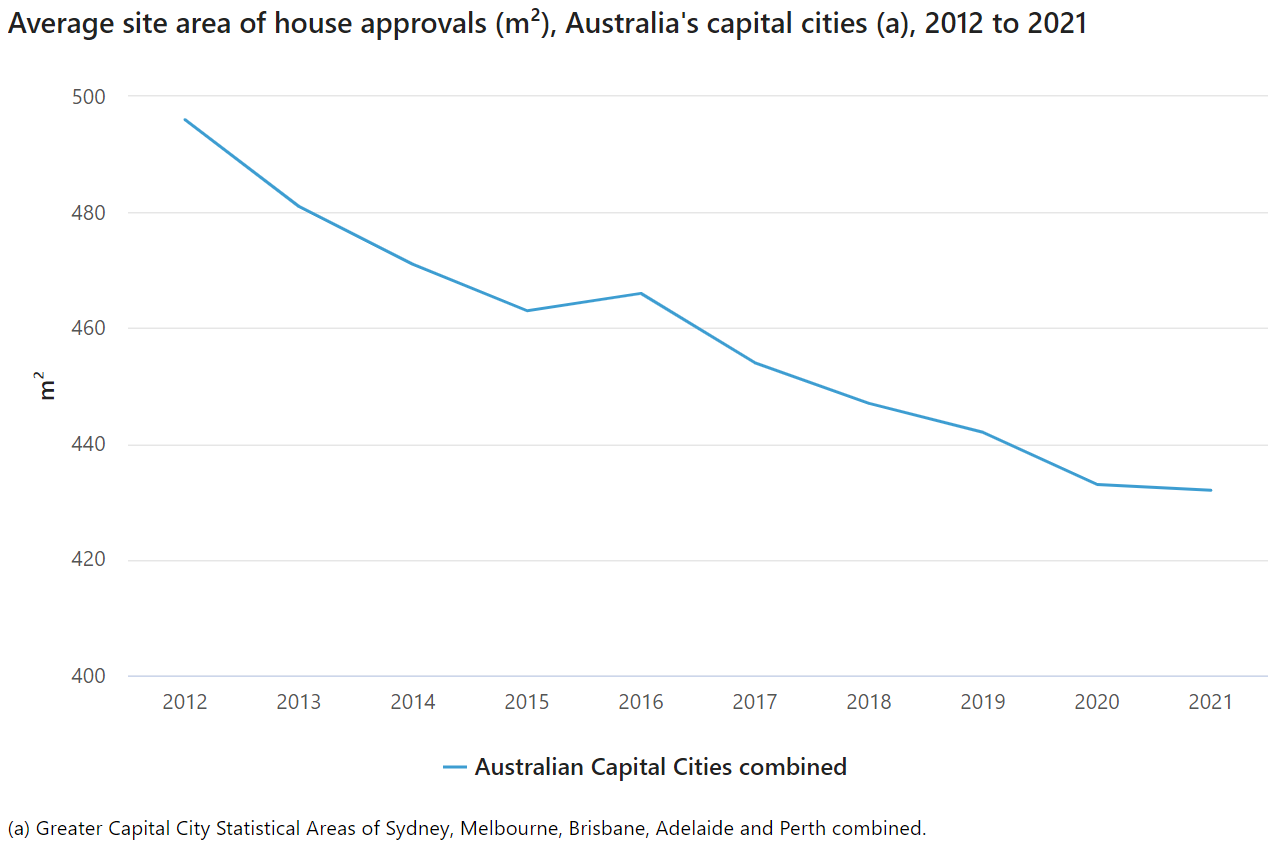
Source: ABS
All major capitals experienced significant declines in lot sizes:
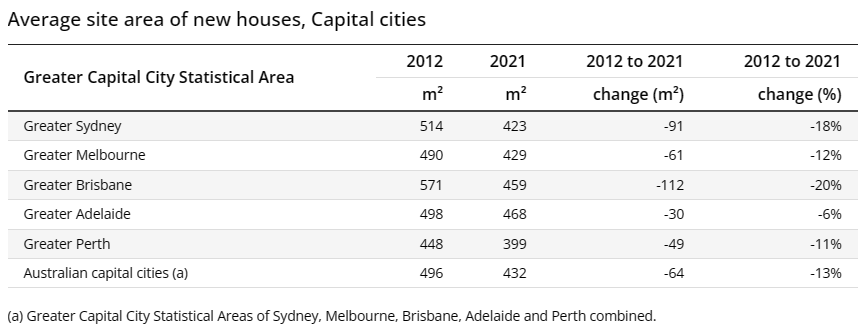
Source: ABS
Separate data from CoreLogic likewise showed that median lot sizes shrank significantly across the capital cities in the decade to March 2013, with Sydney leading the decline:
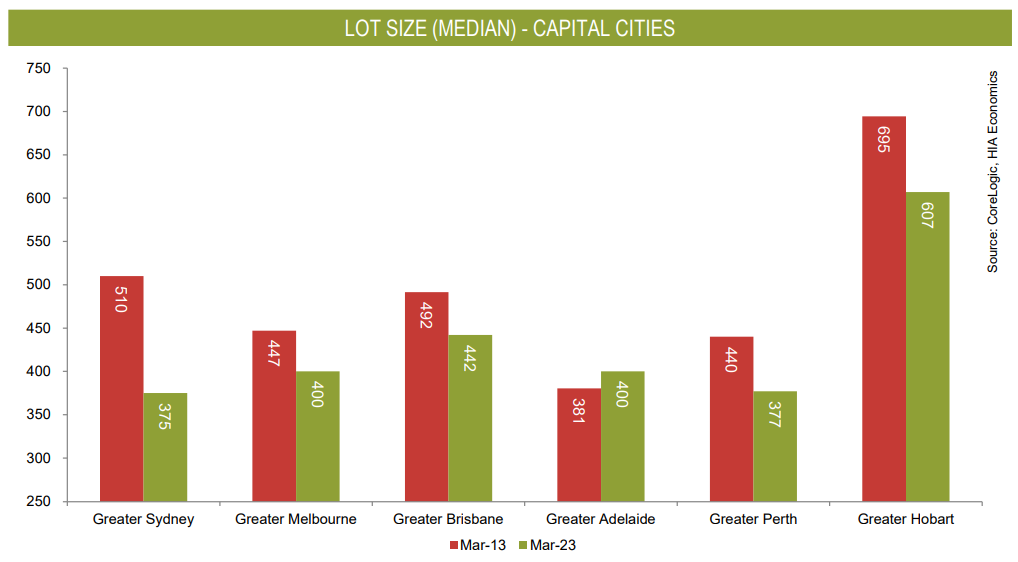
The shrinkage in lot sizes across were as follows, according to CoreLogic:
- Sydney: -26%
- Melbourne: -11%
- Brisbane: -10%
- Adelaide: +5%
- Perth: -14%
- Hobart: -13%
By contrast, median lot prices soared over the decade, with the immigration epicentres of Sydney and Melbourne recording the sharpest growth:
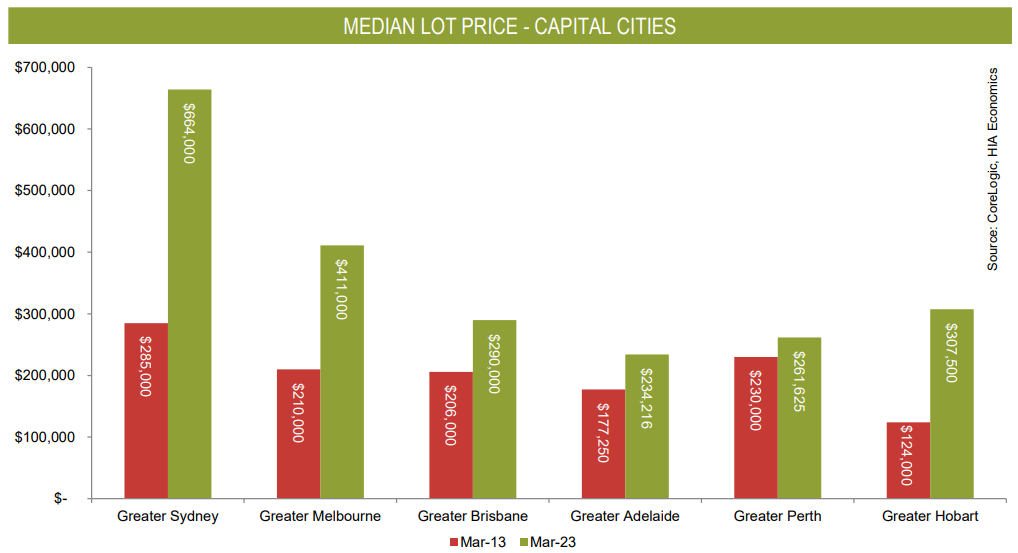
The rate of land cost inflation across the capitals was as follows, according to CoreLogic:
- Sydney: +133%
- Melbourne: +96%
- Brisbane: +41%
- Adelaide: +32%
- Perth: +14%
- Hobart: +148%
The combination of shrinking lot sizes and rising median lot prices led to hyper-inflation in the cost per square metre of land:
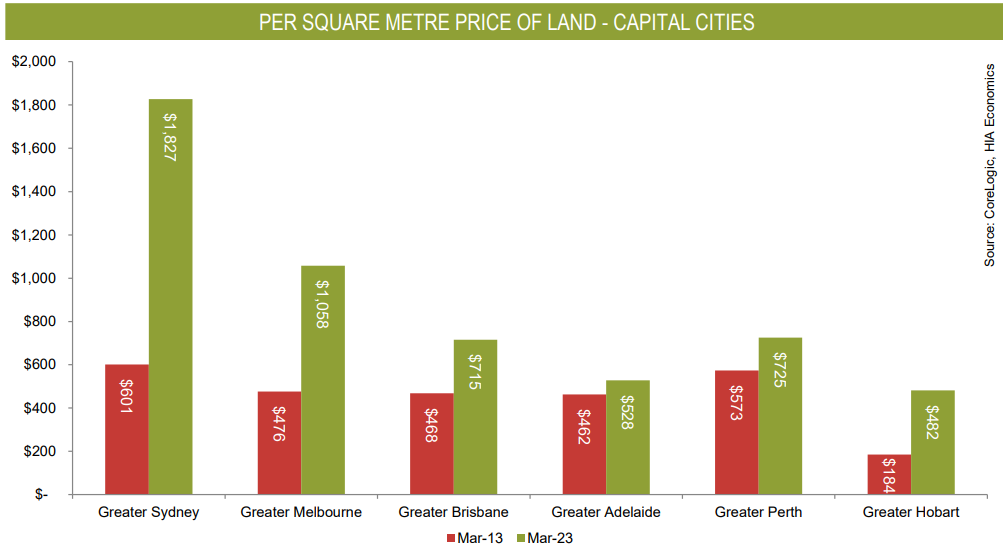
The inflation in land per square metre was as follows across the capitals over the decade to March 2023:
- Sydney: +203%
- Melbourne: +122%
- Brisbane: +53%
- Adelaide: +14%
- Perth: +27%
- Hobart: +162%
Therefore, the notion that shrinking lot sizes would improve affordability runs counter to a decade-plus of empirical experience.

So long as the federal government continues to run an extreme immigration policy, land costs will continue to hyper-inflate as we squeeze millions more people into our major capital cities.
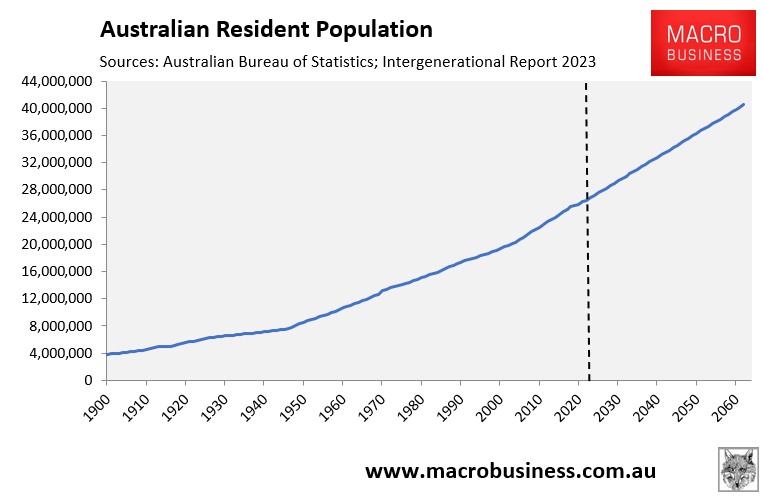
Ongoing strong population growth will push residents to live in denser and more expensive housing.
Existing suburbs will be bulldozed into higher-density apartments and townhouses, whereas outer suburban lot sizes will continue to shrink.

